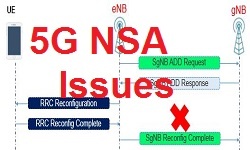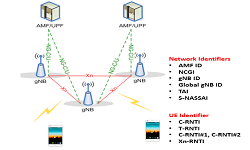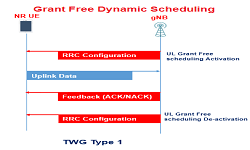3GPP Release 15
In parallel to LTE evolution, Release 13 and Release 14 work already started. 3GPP Release-14 was focused mainly on 5G study items and first phase of 5G system specification just started within 3GPP Release 15 targeted to be completed by September 2018. 3GPP Release 15 is capturing LTE enhancements features and 5G aspects and listed below.
Release-15 LTE Enhancements
- Support for 1024 QAM
- LAA/eLAA for CBRS (Communications Commission for the Citizens Broadband Radio Service) at 3.5GHz
- LTE Operation in Unlicensed spectrum with frame structure type 3
- Advance V2X for Enhancements to V2X
- Enhancement to Narrow Band IoT
Release 15 targets improving the spectral efficiency for LTE small cell deployments using 10 bits per Resource Element and to achieve this 3GPP has introduce the support 1024 QAM support.
Original LAA/eLAA has been standardized within Release 13 and Release 14 respectively for purely unlicensed spectrum at 5GHz for coexistence with WiFi networks. As the CBRS specified by FCC for US, allows for 3-tier spectrum usage model (with incumbent, licensees and unlicensed uses).Release-15 aims at adjusting the frame structure 3 to operate in 3500-3700MHz band using the LAA and eLAA framework.
LAA feature specified within Release 13 for DL operation in unlicensed spectrum and eLAA feature from Release-14 to cover both DL and UL, Release 15 is aiming at improving the performance of LTE in the unlicensed spectrum by specifying the support of autonomous uplink access within frame structure 3.
Release 15 for V2X covers the support of advanced V2X services like vehicle platooning, advanced/remote driving, extended sensors and keeping backward compatibility with Release 14 V2X . Some of the objectives include improvements for PC5 link, Aggregation of up to 8 PC5 carriers under CA feature, 64QAM, transmit diversity, short TTI.
First time Narrow Band IoT baseline had been specified with the first release of LTE-Advanced Pro within Release 13. Release 14 is specifies the enhancements to the baseline that including positioning support, multi-cast and non-anchor carrier operations. Further Release 15 provides enhancement introduce NB-IoT small cell,TDD operation in in-band, guard-band and standalone operation modes.
3GPP Release 15/5G Features
5G normative work is planned in two phases
- Phase 1 is with Release 15 addresses the more urgent use cases for commercial deployments like eMBB(enhanced Mobile Broadband) and some aspects of URLLC (Ultra-Reliable Low-Latency Communications), it is planned to be completed June 2018
- Phase 2 is with Release 16 includes IMT 2020 submission, addresses all identified use cases & requirements and planned to be completed by March 2020
A Short list of these first 5G feature Item can be categories as below
- Phase 1 5G baseline System Feature
- New Radio Access Technology
- 5 New Radio connectivity to EPC in Dual connectivity Mode (EPC enhancements)
- LTE connectivity to 5G Core Network (5G-CN)
5G phase 1 system is expected to have key features like network slicing support, access and mobility management, QoS framework, policy framework, network sharing, access of un-trusted non-3GPP network inter-working(Wimax, Wi-Fi), integration with EPS (Evolved Packet System), etc. The specifications within Release-15 work items will describe the new system architecture and procedures required for 5G system.
The first phase of 5G system has introduced a radio access technology named New Radio – NR. This 5G-NR should cover eMBB and URLLC use cases using the frequency ranges of up to 52.6GHz. The New RAT work item in phase 1 aims at covering both NSA (Non standalone) and SA (standalone) connectivity options.
The initial 5G NR deployment are expect to be NSA (Non Standalone) where LTE system serves as primary cell for signaling anchoring and NR is added as secondary cell. In order to achieve this tight inter networking of LTE and 5G-NR , the EPC (Evolved Packet Core) required certain enhancements which includes extending the range of QoS parameters, handling of the UE capabilities, including 5G-NR parameters in the MME and controlling the access to 5G NR.
On the other side of this inter-working between LTE and 5G-NR, requires the E-UTRA (LTE cell) to be connected to 5G-CN (Core Network). This needs certain enhancements within LTE to support network slicing, flow based QoS framework, and mobility support where the handover between 5G-NR and LTE both connected to 5G-CN or where different LTE cells connected to EPC and 5G-CN.
Related Posts:
- 3GPP Release 8
- 3GPP Release 9
- 3GPP Release 10
- 3GPP Release 11
- 3GPP Release 12
- 3GPP Release 13
- 3GPP Release 14
- 3GPP Release 15



